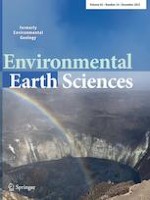01.12.2023 | Original Article
Evapotranspiration estimation using a satellite-based surface energy balance: a case study of Upper Bari Doab, Pakistan
Erschienen in: Environmental Earth Sciences | Ausgabe 24/2023
EinloggenAktivieren Sie unsere intelligente Suche, um passende Fachinhalte oder Patente zu finden.
Wählen Sie Textabschnitte aus um mit Künstlicher Intelligenz passenden Patente zu finden. powered by
Markieren Sie Textabschnitte, um KI-gestützt weitere passende Inhalte zu finden. powered by
